When and How to Cut Back Salvia ‘Hot Lips’ Plant: Caring Guide
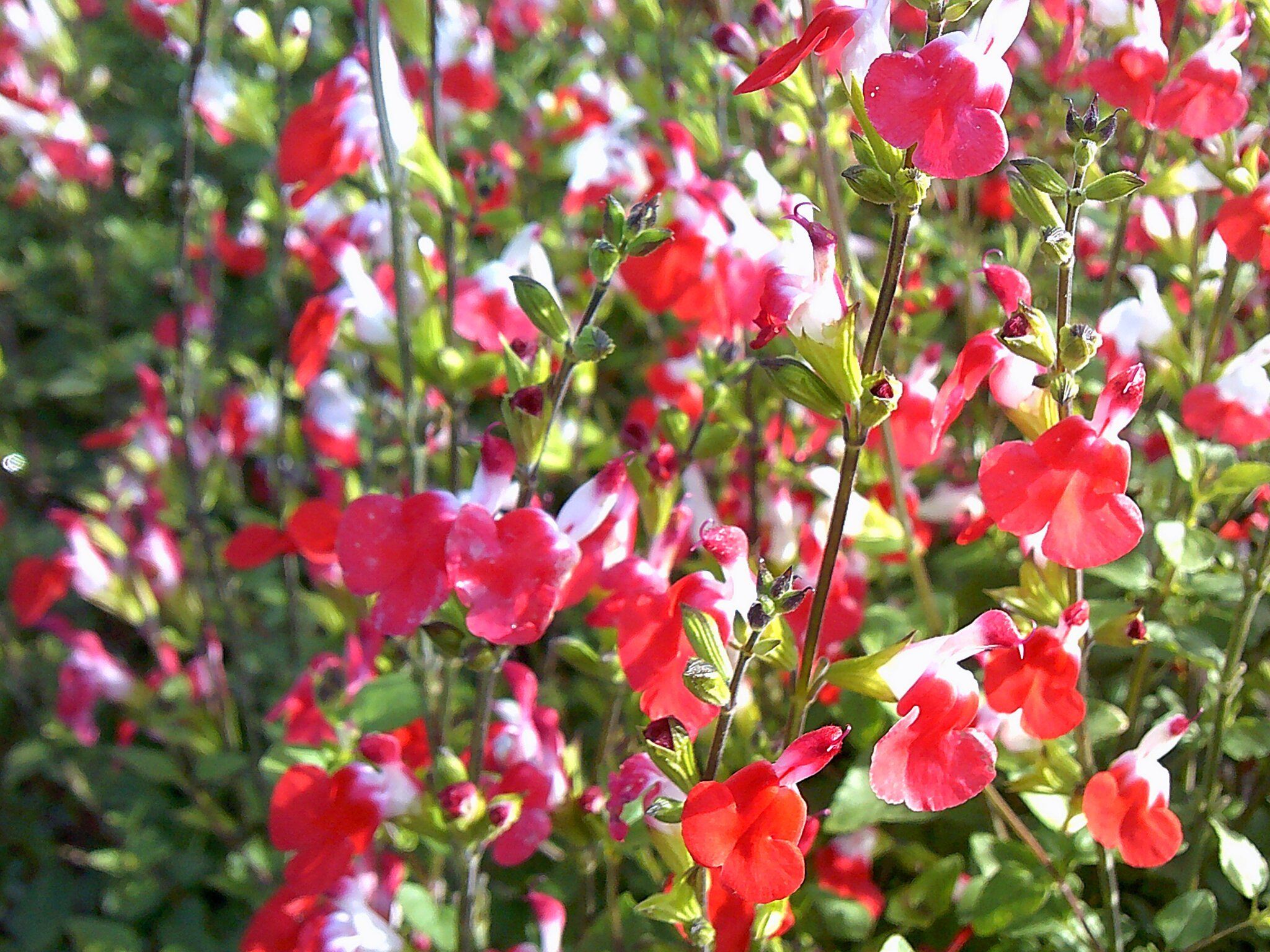
Table of Contents
Salvia, the perennial, is a great flowering shrub to have in your garden this summer. Not only is it easy to grow, but the foliage, along with the flowers, are extremely pretty to look at. The aromatic leaves are also often plucked to put on different dishes. Overall, planting salvia is a project worth undertaking.
But questions like When can I cut back my hot lips plant? Often arise among gardeners. And the answer usually lies in the details of the plant’s growth, propagation, and care properties.
In this article, we discuss all about the Salvia plant and how to make the best of them.
Salvia Hot Lips Plant Overview
The Salvia plant is not just known for its beauty but for its culinary and medicinal uses as well. The sage plant is used worldwide as a core herb during special occasions like Thanksgiving dinner and Christmas. But it can also treat illnesses like the common cold and flu. Overall, it is a plant that can be a great addition to your garden.
The hot lips plant in the UK, or Salvia × jamensis, is most commonly found in cottage-slash-informal gardens. However, you can also put your spin on the plant and have it growing on your patio or courtyard.
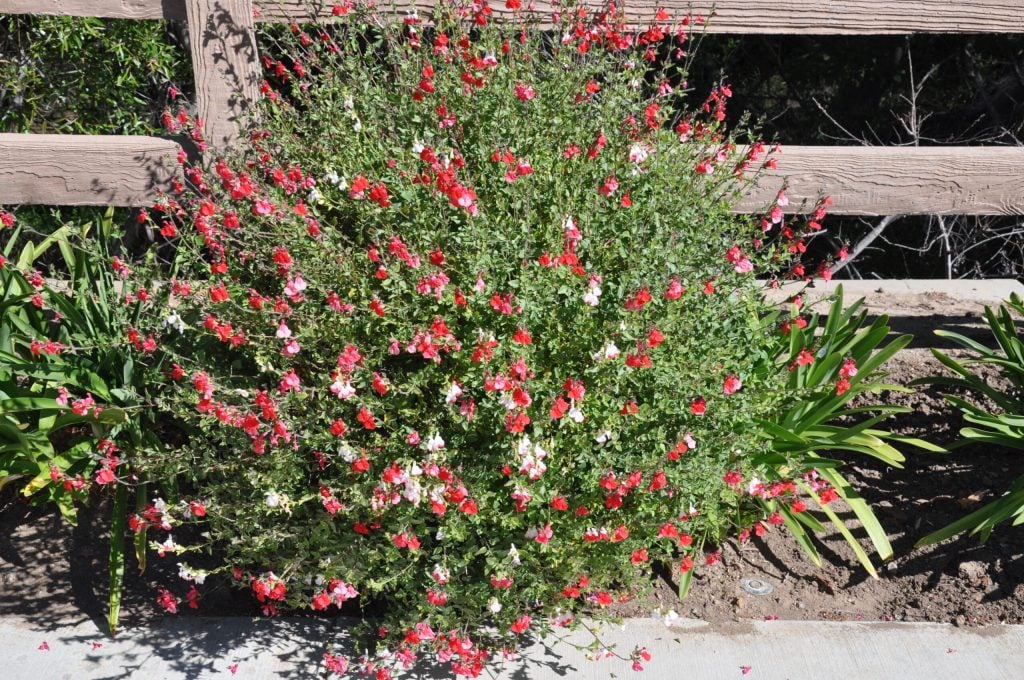
Salvias can be of different types, annuals, biennials, herbaceous, or even evergreen perennials. They are also raised as shrubs in the UK, as a green border between houses. The bushes usually have short spikes of two-lipped flowers with paired leaves that are aromatic and pinnately lobed. The fruits are small and round, either black or brown, and contained in papery seed pods.
|
Scientific Name |
Salvia x jamensis |
|
Common Name |
Salvia ‘Hot Lips’ |
|
Plant Type |
Perennial Shrub |
|
Native Area |
North America |
|
Height |
90 cm |
|
Spread |
60 cm |
|
Hardiness Rating |
H5 |
|
Foliage |
Evergreen |
|
Habit |
Bushy |
|
Aspect |
South–facing or West–facing |
|
Exposure |
Sheltered |
|
Position |
Full Sun |
|
Drought Resistance |
Yes |
|
When To Plant |
May-June |
|
When To Prune |
September-October |
How to Plant Your Salvia Hot Lips
The name of this particular salvia plant is very indicative of its nature. The hot lips plant in the UK thrives when the temperature is high and rising. It also has a high hardiness rating, meaning it will easily survive the harsh winters in the UK.
But on the off chance you think that the plant may succumb to the frost, take a cutting off the existing plant. That way, you can ensure its survival despite the weather.
Salivas are not too particular about their soil either. They can thrive in most moderately fertile soils as long as it has good drainage. You can take any kind of loam, sand, or clay for your garden beds and have your hot lips grow there well.
The soil’s pH balance can remain neutral or get acidic or alkaline, and your crop will not be affected. However, Salvias do not care much for overtly-dry or overtly wet feet, so make sure your soil is not parched or waterlogged.
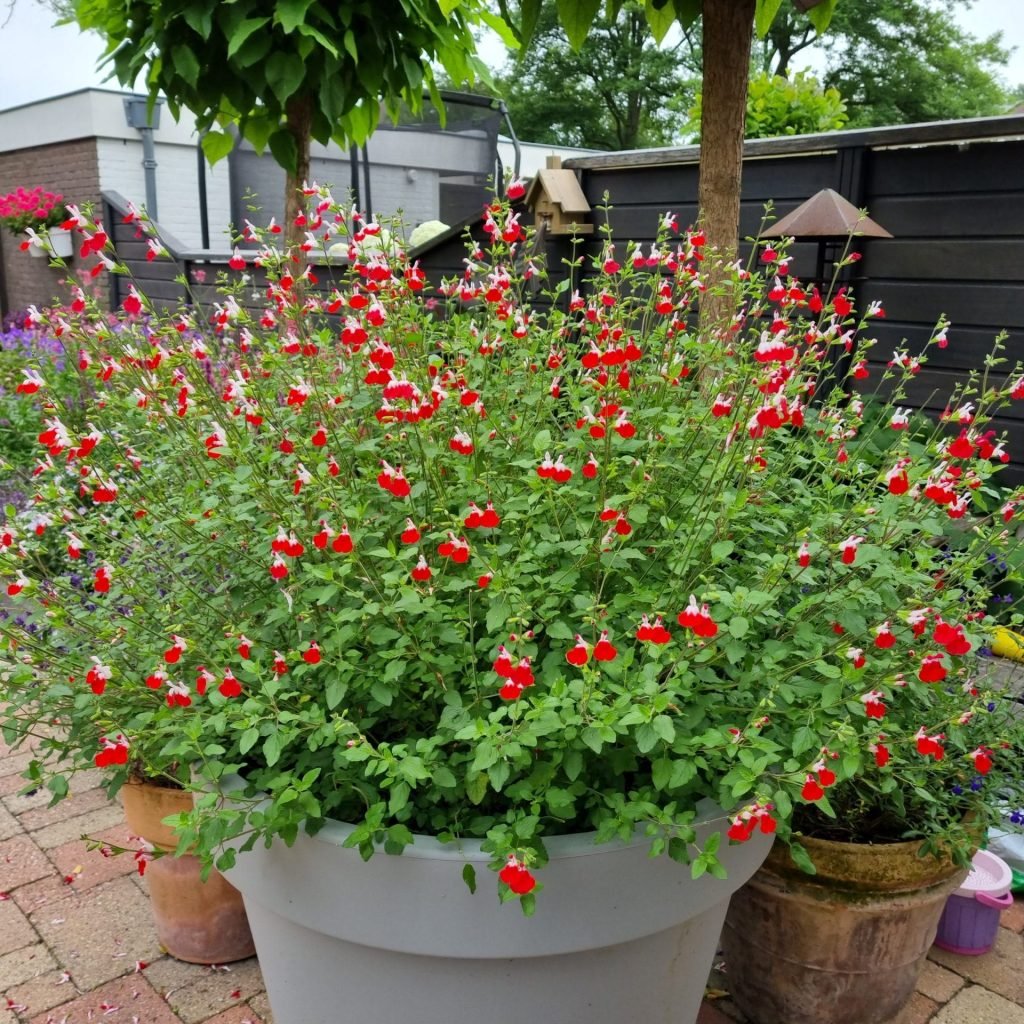
Salvia plants also do very well during the warm months. It also needs plenty of sunlight to flower. So make sure to plant in a position that gets the maximum sunlight. A south-facing location in a sheltered spot of your garden will ensure its proper bloom.
Sowing time depends on whether you plan on growing your hot lips in a container or on the ground. If you grow on planters, you can sow the seeds as early as early spring. Some varieties also adapt well when sown during autumn under cover.
But you can put them directly on the ground in late spring and summer. Just keep an eye out for the weather to make sure there are no chances of frost in the air.
Pro Tip: Keep the soil humus-rich for optimum results.
When Can You Cut Back Your Hot Lips Plant [UK]
Salvias are the favorite of most gardeners as they require little to no care. They can blossom all summer long, even without your attention, but the problem comes with winter and its harsh weather. So, you can keep in mind when you can cut back on your hot lips plant in the UK.
If you live in the coldest parts of the UK, chances are you are scared of your plants dying in the winter. But to protect your salvia ‘hot lips,’ you can just use the usual horticulture fleece. This product shields your plant from excess moisture as well as cold-cutting winds.
![When Can You Cut Back Your Hot Lips Plant [UK]](https://www.thearches.co.uk/wp-content/uploads/When-Can-You-Cut-Back-Your-Hot-Lips-Plant-UK.jpg)
Another alternative is to plant the salvias in a pot so that you can move them at your convenience. You can put them under the full sun during the day and move them indoors at night.
1. Pruning
Salvia hot lips plant is by nature a shrub. Therefore, it is not strictly necessary to prune. But if you want to make your garden hedge look tidy, you can prune them mid-to-late spring. Be sure not to prune too early, though, as it is bound to harm your plant in case of a sudden frost.
As the warm months begin, the plant will start growing again, and that is the perfect time to prune a third. This will encourage the shrub’s natural shape while removing some of the unsightly shoots. The blooming season also requires a little pruning to remove the deadheads. This will help the flowers bloom better and for a longer period.
2. Propagation
Salvias can be grown from seeds, but the best way to propagate them is to take a cutting. So the next time you think about cutting back your Hot Lips Plant, Consider cutting carefully so that you can save a piece and replant your original variety on a rainy day.
Cutting is relatively simple if you know the basics. But even if you are a beginner, with these steps, you will become a pro in no time. The trick is to take a sharp knife or secateurs and make the cut with precision. Look for the non-flowering branches and take as many as you can. But make sure the cut is made just below the leaf node.
The materials should be from a shooting tip, and each cutting should not be bigger than 2 to 3 inches. The best materials are found during late summer when the cuttings would be semi-ripe. You can also opt for spring softwood tip cuttings before the plant begins to flower. Remember to go out and collect them during the morning, as that is when the plant is at its peak hydration.
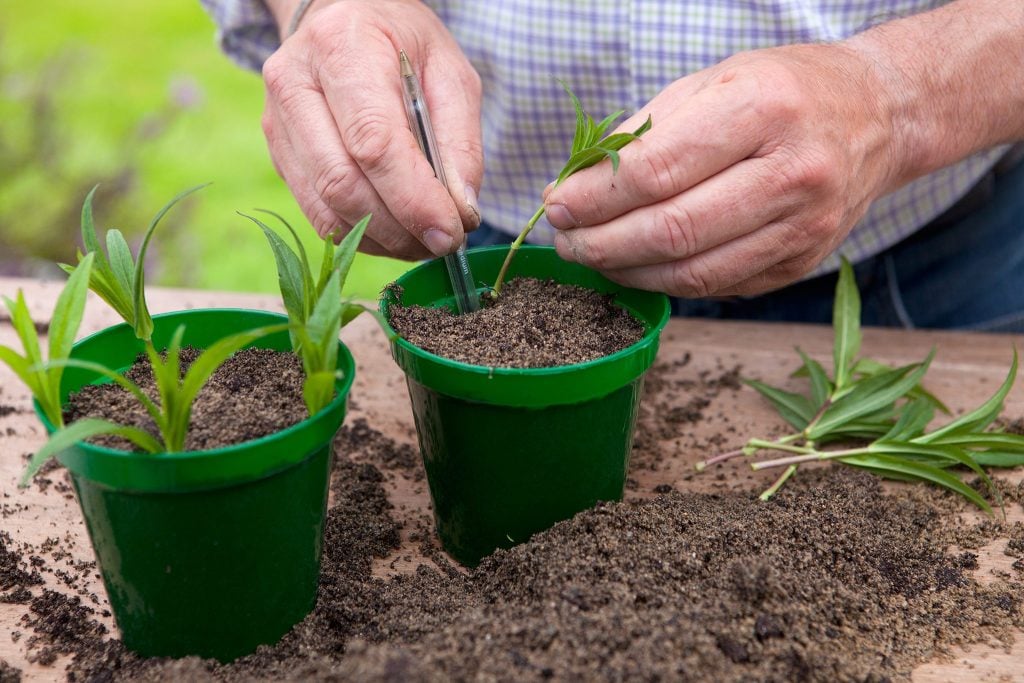
Store your cutting in a piece of plastic, and make sure all your equipment is sterilized. Otherwise, the roots can suffer from blackleg. When it is time to plant the cuttings, dip the base into a rooting hormone compost before shifting it into a pot. Your planter should not be deeper than 15 cm or 6 inches and should be filled with grit.
Each planter should contain about 5 to 8 cuttings so that they have enough space to spread their roots. This pot will then need to go into a propagator with a sufficient amount of water and be kept at room temperature. You can also keep the planter covered with plastic to get the same result.
Companions For Your ‘Hot Lips’
Salvia’s ‘hot lips’ are pretty just by themselves, and their enticing flowers can change the look of any garden. But they also look good when paired with other perennial plants, either as a border between houses or on pots. Plants like snapdragon ‘Antirrhinum,’ ornamental onions, dahlias, echinacea, and penstemons often look great with hot lips.
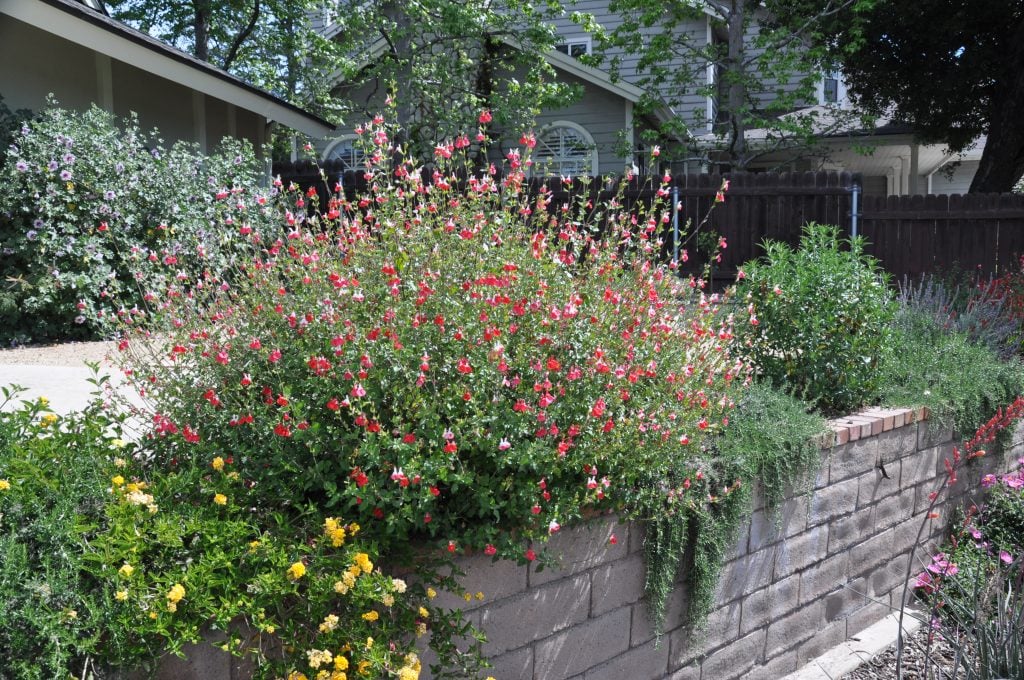
Another flower that would compliment the hot lip’s colour scheme is roses. Salvias look great as an underplant to roses, as their flowering times are opposites. The salvias start to bloom just as the roses finish. You can also plant other varieties of salvias along with yourhot lips plant.
Pests And Diseases
Some of the most common issues faced by salvias are pests like slugs and snails. They start coming for the precious plants as early as spring and can wreak quite havoc on your flowers. The shoots are quite young then but can be protected till they get strong enough to grow away from the ground. Just ring the soil around it with seaweed granules. However, most big shrubs are often safe from these.
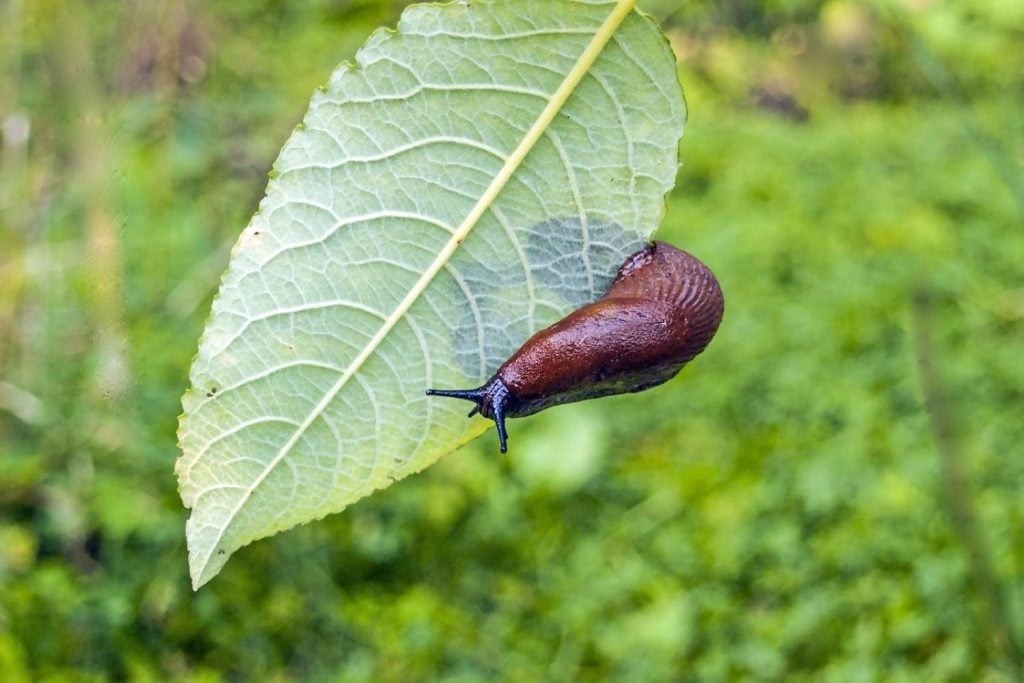
New shoots are also often attacked by aphids like greenflies. The best way to keep them away would be to squash the couples that hover before they turn up in groups. Greenflies are also easy to spot, so squashing won’t be difficult. But before you go thinking, when can I cut back my hot lips plant to control the pests? Remember that when the weather warms up, other insects like ladybirds and lacewings will be there to keep the greenflies away.
Why Plant Salvia Hot Lips
These hot lips plants have an added advantage to their name, their enticing flowers. Depending on the climate, the red-and-white bicolored petals can be either entirely red or entirely white, making them an excellent choice for hedges. You might think of these salvia care regimes and wonder.But fear not; they are extremely easy to cultivate and will not die out during a harsh winter.
Apart from their beauty, these salvias are also good for attracting bees and butterflies into your garden. Their enticing aroma, complete with the blossom’s aroma, is irresistible to man and beast alike. To make the best of this, plant your salvias in full view so that everyone can enjoy your garden.
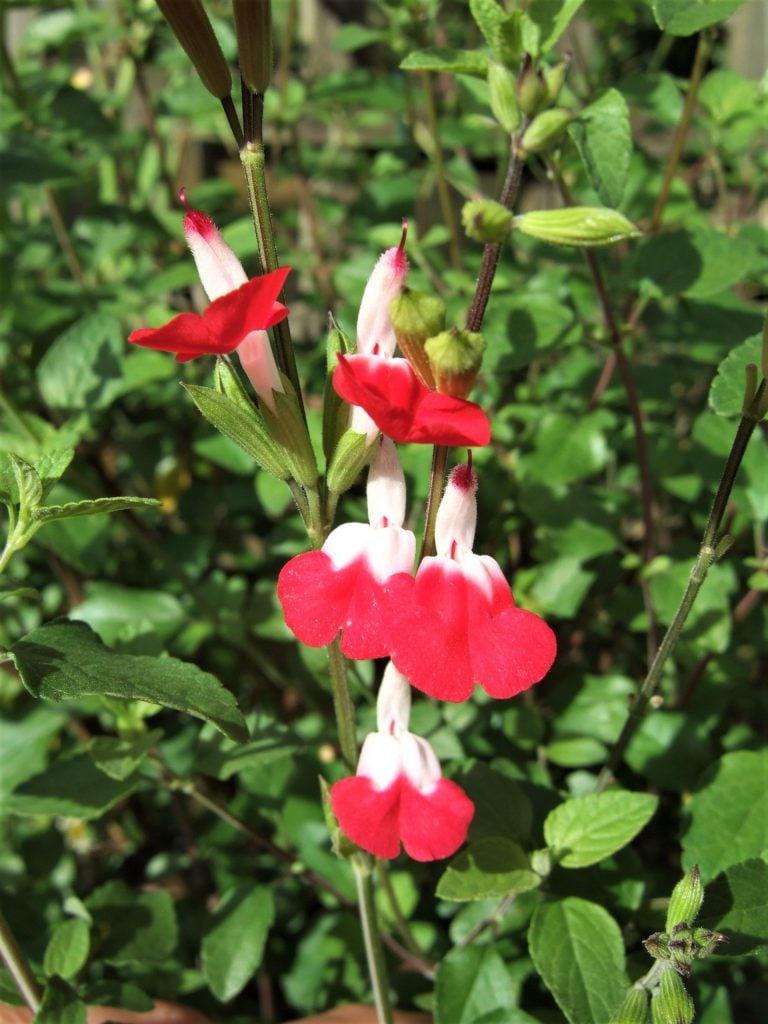
The ‘hot lips’ plant is a member of the ornamental sage family and is loved due to its extensive blooming periods. The open-mouthed petals are a sight to look at during all of summer and autumn. And as beautiful as it is, the flowers and foliage are also edible and are often used as garnishes in salads. People often compare the taste to that of black currents, but in any case, you would never regret planting these salvias.
Bottom Line
Salvias are great perennials that can be planted anywhere in the garden for a great aesthetic. Their beautiful flowers, aromatic leaves, and overall foliage make for an excellent backdrop for any home. And when new gardeners plant them early during the warm months, they have virtually nothing to do except wait for the flowers to bloom.
Keep the care instructions and propagation method in mind, and you will never need new salvias again. But if you have any questions, like when can I cut back you hot lips plant in the UK, comment below, and we will clear every gardening doubt you have.
Frequently Asked Questions
How Do You Care for Salvia Hot Lips?
The Salvia hot lips need moist soil to grow, but too much water can cause waterlogging. That, in turn, can cause the roots to rot. So, let the top inch of the soil dry before you water it again. A general rule of thumb is to water deeply only once or twice a week.
Do Salvia Hot Lips Grow in Pots or Ground?
Salvias can grow both on the ground as well as on pots. On the ground, salvias are often chosen as bordering plants. However, if you are growing them on planters, choose a big one so that your soil doesn’t get too soggy.
Are Salvia Hot Lips Fast Growing?
Yes, the salvia hot lips plant is a fast-growing plant, especially if provided with regular water and fertilizer. However, little nutrients and no water can often turn the plant dormant.

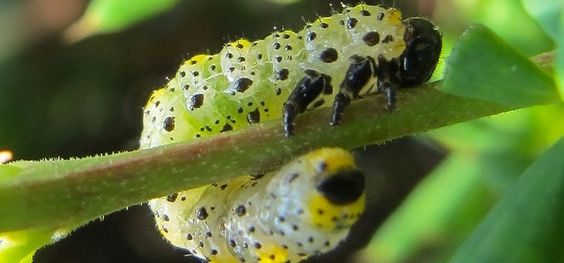
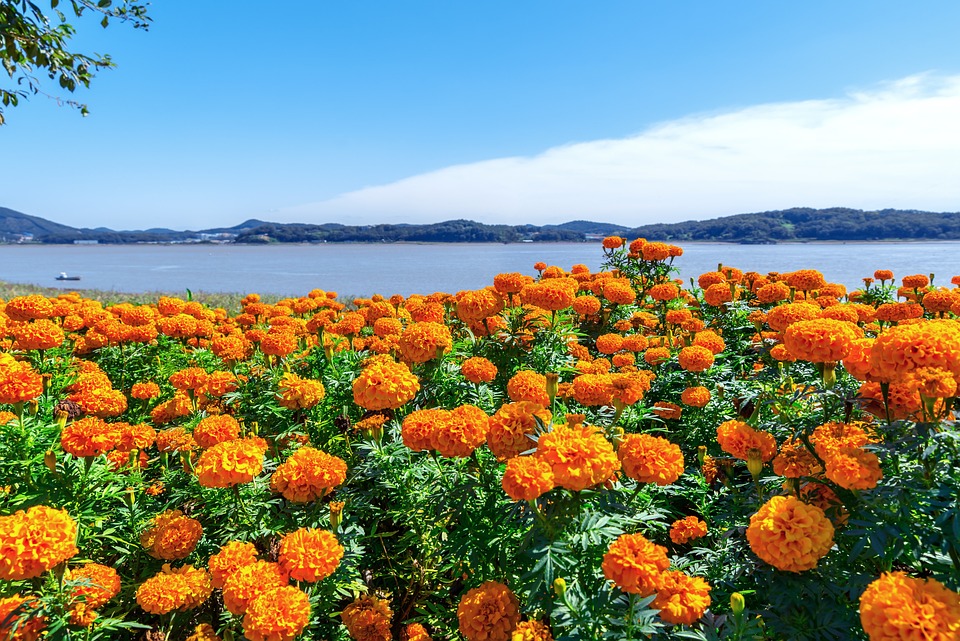
![Learn How and When to Prune Your Pear Trees [UK]](https://www.thearches.co.uk/wp-content/uploads/How-And-When-To-Prune-Pear-Trees.jpeg)


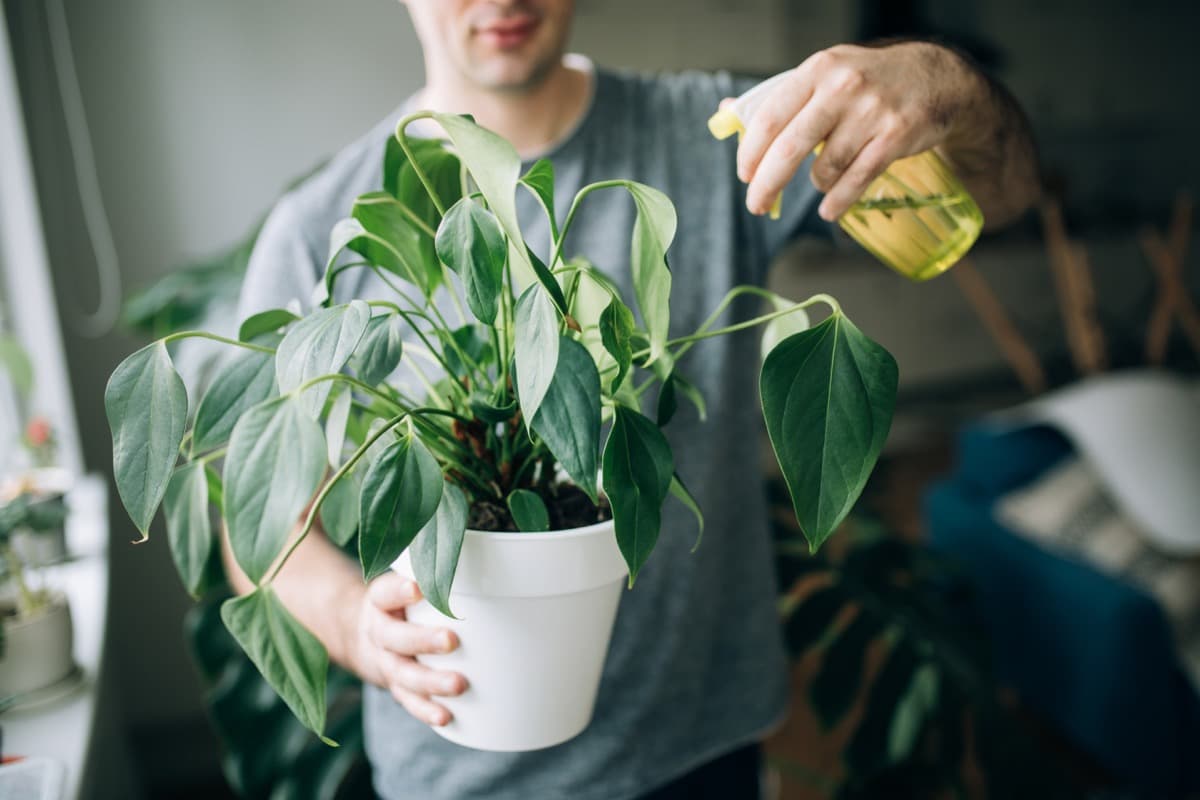
Can I cut back my hot lips now in uk